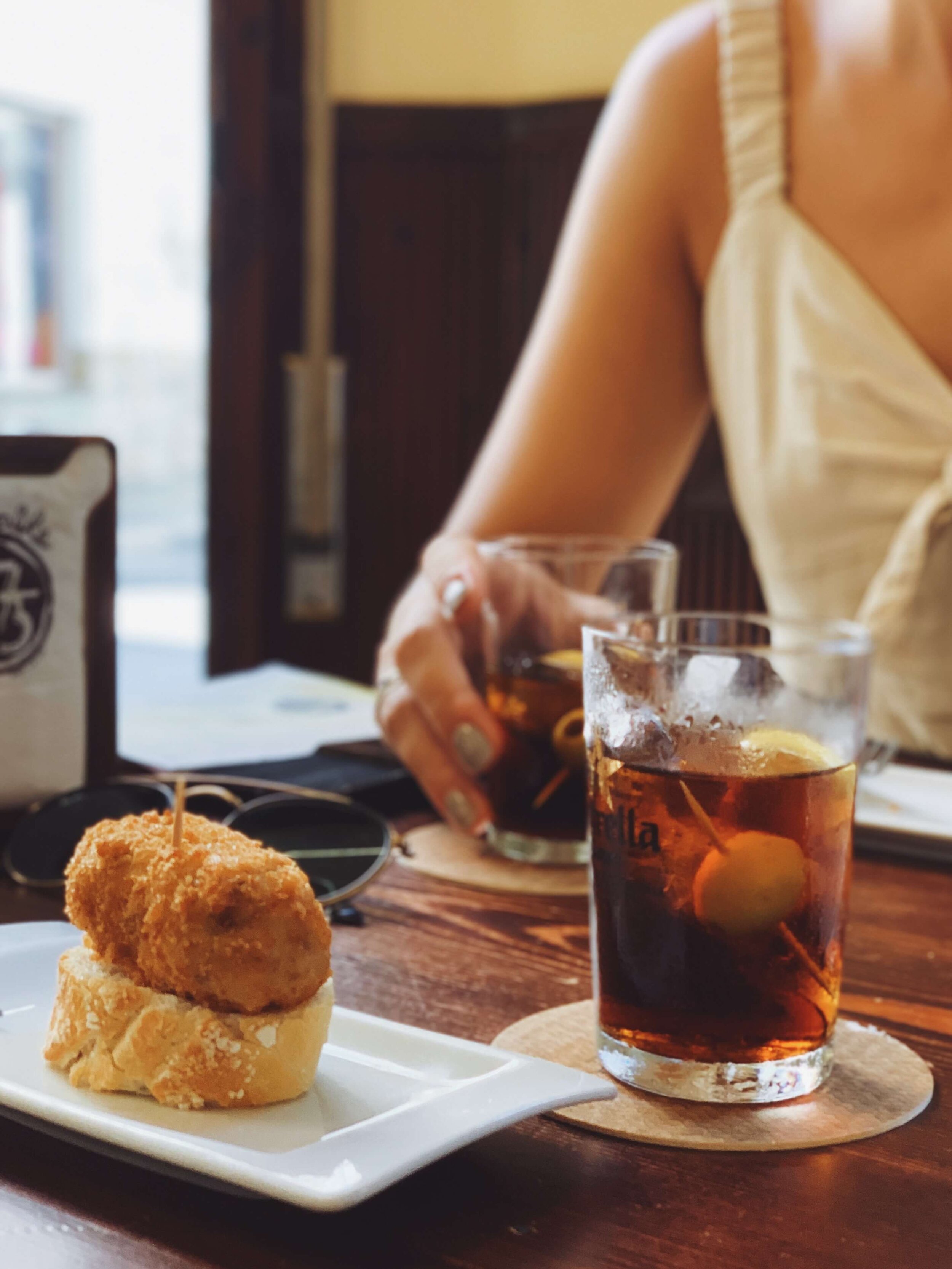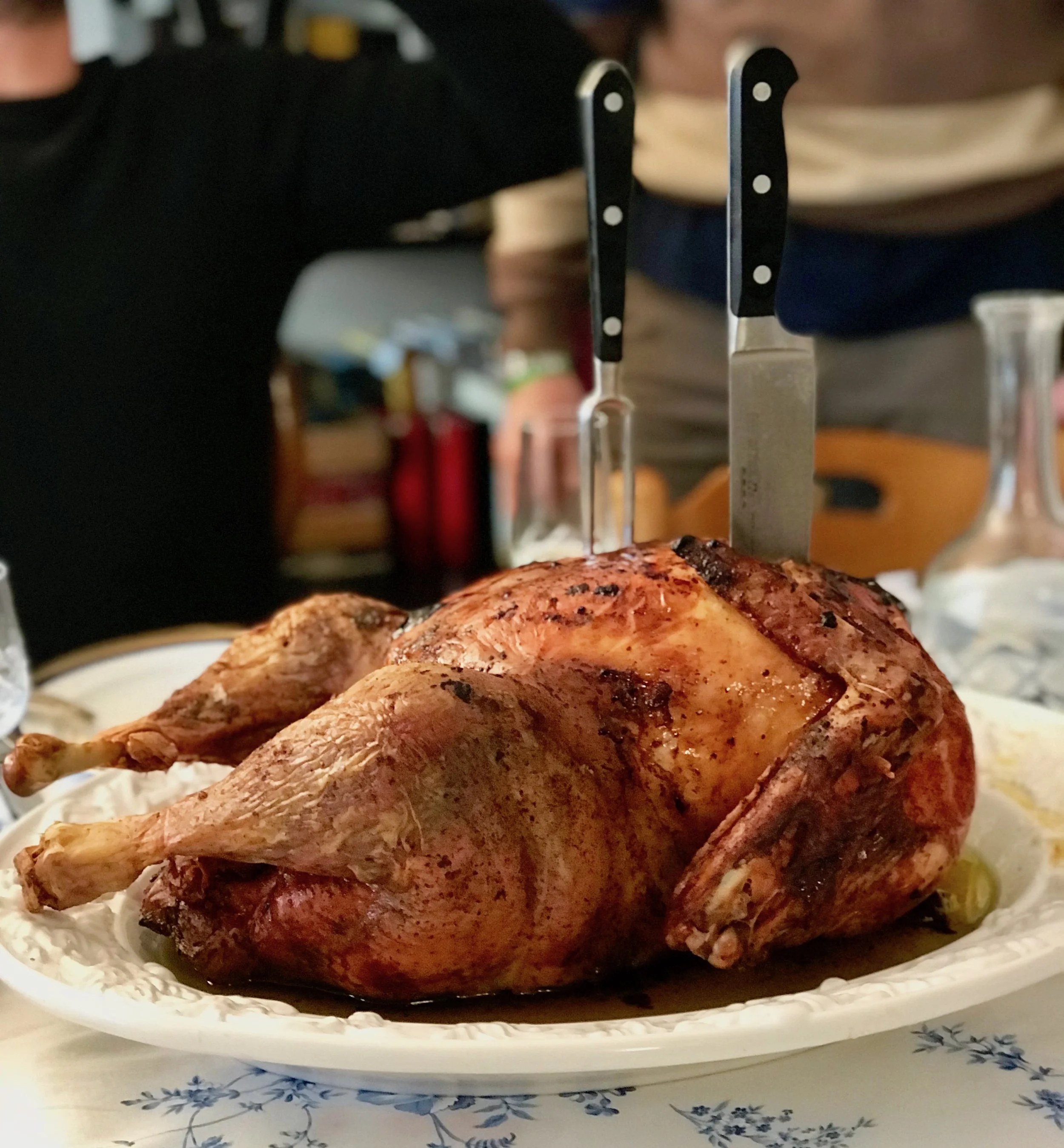If You Like Italian Food, You’ll Love Spain!
This week I’m doing something a bit different and inviting one of my favorite food pals, David Pope, to share about the interesting crossover between Spanish and Italian food. I always turn to his blog for creative recipes, no-nonsense reviews and his sense of humor that permeates every bit of his content.
As soon as you’re done loling your way through his post (I DARE you not to laugh at his description of parmigiano), head over to his blog or Instagram to follow along on his cross-continental, gastronomic journey. And you can find my post on David’s blog here, all about my ever-evolving relationship with Italian food. Enjoy!
When I first met Abbie, she almost convinced me to move to Italy. I’d lived in southern Spain for five years, but Abbie’s descriptions of Italian food were mesmerizing.
Luckily, a quick trip to my favorite local tapas bar returned me to my senses. I ordered a cold glass of vermut, my ubiquitous plate of olives, and sat back to enjoy a plate piled high with golden, deep-fried croquetas.
It made me remember: nothing beats Spanish food!
Why You Should Eat Spanish Food
A chef friend of mine from Seville says it best. “In Spain, we cook with love. It’s all about taking fresh ingredients and letting them speak for themselves. Maybe we add a little bit of olive oil or a pinch of salt; but that’s it!”.
Now, you might be thinking that this sounds a lot like Italian food. And that’s true; these two Mediterranean foodie cultures have a lot in common. It’s probably why so many Spaniards say their favorite food is Italian.
(That’s not a joke! When I first worked in Spain as an English teacher, most of my students said that their favorite food was pizza. The others said spaghetti).
It’s also the reason you’ll fall in love with Spain. If you’re already a fan of Italian food, Spanish cuisine is calling you. There are a lot of things in common, and quite frankly, a lot of things that Spain does better. (Sorry Abbie).
But where should you start? Well, I’ve done the hard work for you. (And by hard work, I mean I’ve eaten a lot of different pizzas and paellas). So I’ve put together a list of Spanish foods that will tempt even the most ardent lover of la cucina di nonna.
Here are my top picks for the Spanish foods you need to try!
What to Eat if You Love...
Prosciutto
Sure, a good plate of prosciutto is one of the greatest pleasures in the world. Not only is it great by itself, but it also somehow transforms into a salad when you wrap it around a hunk of melon. That’s some delicious dark magic that I have to respect Italy for.
But it ain’t got nothing on jamón ibérico.
“Iberian ham” is to prosciutto what your soccer-playing nephew is to Lionel Messi. Sure, they might have something in common, but one is clearly better.
In fact, they don’t even come from the same pig! Iberian ham must come from an Iberian pig: a special breed native to southern Spain. The best quality comes from pigs that spend three years free-roaming around oak forests. They gorge themselves on a diet of acorns, olives, mushrooms, and forest herbs, giving their meat an incredible depth of flavor.
After at least three years curing in an underground cellar, the ham emerges with a supercharged, intensely nutty flavor. Try it once and you’ll never go back to prosciutto!
Bruschetta
I love bruschetta as much as the next guy. It’s a wonderful expression of fresh, flavorful produce. There is something so Mediterranean about the combo of tomato, olive oil, and basil.
Maybe that’s why a similar dish exists in Spain! Pa amb tomàquet is a local favorite in Catalonia, on the Spanish side of the Mediterranean. It’s a simple take on bruschetta, so what makes pa amb tomàquet (“bread with tomato”) so special?
For me, it’s the build-a-bear effect. In Barcelona, you make your own pa amb tomàquet at the table of the restaurant! Rub a clove of raw garlic into toasted bread, smash in half a tomato with your bare hands, and finally drown it in an impossible quantity of olive oil.
Food always tastes better when you make it yourself!
Arancini & Supplì
Nothing makes a better midnight snack than something brown and deep-fried. It seems like almost every country in the world has something that fits that description. Sicily has arancini, Rome has supplì, and Spain has croquetas.
But unlike its Italian cousins, the humble croqueta is a little more simple. Rather than rice, Spanish croquettes are made from balls of bechamel, stuffed with whatever you want, breaded and deep-fried.
You can find croquetas made with ham, mushrooms, cuttlefish, spinach, yesterday’s stew and almost anything else you can think of! They make the perfect snack to go along with a cold glass of Spanish beer.
And unlike arancini, they won’t sit in your stomach for hours after you eat them!
Parmigiano-Reggiano
Few cheeses reach the tasty heights of Parmigiano-Reggiano, which people still love even when they think it tastes like vomit. That’s an almost cult-like adoration right there.
So I won’t say that Manchego–Spain’s most famous cheese–is better than parmesan.
But I will tell you that it’s better value. Some estimates reckon that only 1 out of every 10 wheels of parmesan that are sold are actually real. The rest are fakes, and don’t have anything on the nutty, grassy, back-of-the-spice-cupboard flavor of the real thing.
So why risk it? Cut your losses and buy manchego. It’s a delicious cheese, with the same sharp, nutty taste of true Parmigiano (just without the vomit). And just like Parmesan, you can find Manchego that has been aged for anything from a few weeks to a few years.
Lastly, it just might be healthier. Sheep milk cheeses like Manchego have twice the protein of cow milk, more of those healthy monounsaturated fats, and way less lactose! So even people who normally wouldn’t touch cheese can fall in love with a good wedge of Manchego.
(If you live in the U.S., be careful to buy the right manchego. There’s a not-at-all traditional type of industrial cheese made from cow’s milk, similar to Monterey Jack, sold all across North America. If it doesn’t have the Spanish stamp, it’s not worth buying!).
Calzone
The first time I had calzone, it was listed on the menu as “pizza surprise”. I guess the idea was that you didn’t know exactly what was inside the thick blanket of dough until you sliced into it.
Luckily, Spain has its own version of “pizza surprise”, too (although you might not know it comes from Spain). It’s called an empanada.
The verb empanar literally means to coat something in bread: the perfect name for this simple turnover. But whereas the Latin American empanadas you’re more familiar with are filled meaty, cheesy concoctions, the versions from Spain’s northwestern region of Galicia are stuffed with spiced tuna!
It’s the best tuna melt you’ve never had.
Ossobuco
When I think of the best cucina di nonna (grandma’s cookin’), I think of meaty stews, lovingly cooked low and slow under the watchful eye of nonna.
Recipes like ossobuco or spezzatino… just the names make me drool. And there are plenty of Spanish dishes that have the same effect: cola de toro (stewed bull tail) and pringá (shredded slow-cooked pork) are just as likely to elicit an onslaught of saliva.
But when I think of the best stewed meat in Spain, my mind goes straight to carrillada. (You’ll also see it called carrillera). It’s another cut of the famous Iberian pork, this time from the cheek. The meat is braised slowly with red wine, onion, and spices to make a thick and meaty gravy. The meat itself is a super tender cut, with bags of flavor too!
You can find it anywhere good pork is served.
Presa Ibérica
I’d never thought of Italy as a “big ol’ steak” kinda place. Then I had my first bistecca alla fiorentina.
I never knew how good steak could taste!
So if you’re looking for a good Spanish steak to match the Florentine version, you’re going to have your work cut out for you. It’s not that great steak doesn’t exist (the massive Txuletón rib steaks from the Basque country are a carnivore’s wet dream), but most of the country doesn’t eat a lot of beef.
Pork is the main game in Spain, and a delicious one at that. Whenever a visitor asks me where to get a good steak, I tell them they’re asking the wrong question. Rather than getting a mediocre beefsteak trucked in from northern Spain, I tell them to order presa ibérica.
This cut of Iberiam pork comes from the shoulder of the pig, just at the top of the loin. It’s thick and juicy, but leaner than the pluma cut from the other end of the loin. Unlike most pork, Iberian cuts like this are best served medium-rare (it’s fine, I promise!). So don’t be surprised if your pork is a little pink.
Bio:
Born and raised in Australia, David is now based in southern Spain, where he spends his time leading food and wine tours, blogging about Spanish cuisine, and taking his daily siesta. You can follow his foodie adventures on the Everyday Food Blog.








